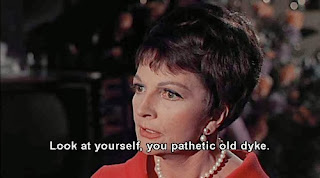A low budget need not restrict an artist from fully realized creative expression...in fact, it often forces the filmmakers toward creative and original methods of telling their stories.
The Honeymoon Killers (1969) is a twisted tale of jealousy, sacrifice and obsession, with high black humor punctuated by brutal acts of cold-blooded violence. Filmed in stark black and white, this little film, which bills itself as “one of the most bizarre stories in the annals of crime,” makes for one of the most bizarre and original motion pictures of the 20th century. Based on a true story of a couple who bilked, pillaged and murdered their way through the unlucky members of a lonelyhearts “friendship” club, this early indie effort is considered a cinematic trailblazer and underground masterpiece.
Director Leonard Kastle, who never made a film either before or after this startling debut, tackles the material, the camera and his actors with the savvy of an old pro, capturing layers of meaning in every scene of this rich and deeply affecting odyssey. In lieu of expensive production values, Kastle relies on his actors and his director of photography Donald Volkman to compose scenes and devise shots that evoke humor, terror and pathos by focusing on the talented performers’ expressive eyes and faces. The script, also helmed by Kastle, is as tight as a drum, unfolding a richly layered story with perfectly drawn, quirky characters.
Forming the powerful apex of the film are the unforgettable performances of the brilliant Shirley Stoler and Tony Lo Bianco, two fine character actors who were elevated to leading man and lady for the one and only time in their careers.
As a lonely woman transfigured by the love of a man, the character of Martha Beck as played by Shirley Stoler belongs alongside such legendary spinster portrayals as Bette Davis in Now, Voyager and Katharine Hepburn in Summertime. Obese, cranky and desperately lonely, Nurse Beck toils in a hospital by day and binges on junk food by night while caring for her elderly mother. Actress Stoler, who never again headlined another film as leading lady, sculpts the role of Martha Beck into a thing of beauty with her multilayered portrayal, nailing countless brilliant moments ranging from subtle to epic, becoming a woman transformed (for better and for worse) by love.
LoBianco is sexy, charming, dangerous and complicated as Ray Fernandez, aka Charles Martin, the slick con artist who never turned down a forward pass from the opposite sex. Not known for being a heartthrob or beefcake, this veteran character actor (The French Connection, The Juror) registers an unexpected sex appeal as the compulsive gigolo, even revealing his lean, well-muscled physique in several scenes—dancing the rhumba in tight white pants with the camera trained on his perfectly rounded buttocks; wearing a skintight bathing suit while doing pushups; stripping off his blood-soaked pajamas and sauntering nude into the bedroom to make love with Martha after committing murder. Ultimately, he is the weaker character, relying heavily on the clinical practicality of nurse Martha to clean up their savage messes. And of course, it’s Martha who must put an end to the madness by tipping off the police to their ugliest killing yet.
Despite the unrelenting violence, Honeymoon Killers is at its core a love story. The chemistry of these two actors transcends the nature of their brutal crimes—you actually start to feel sorry for Martha and Ray, despite their acts of evil and ugliness. You really believe that Ray loves Martha above all others; you witness the palpable relief he displays after he reveals his profession to Martha...and she accepts him as he is, even offering to help him swindle the unsuspecting women. But Martha’s jealousy and pride deliberately provoke the violence in every instance, when any of these women try to get close to Ray, either physically or emotionally.
Ray and Martha’s victims, as painted by Kastle and brilliantly brought to life by both skilled and amateur actors, are each so comically annoying, neurotic and dishonest themselves that no wonder Martha is driven to the brink of madness and bent on revenge. From an inane schoolteacher to a knocked-up nymphomaniac to a plain-Jane bed-and-breakfast proprietress, Ray’s lonelyhearts assignations make passionate, plump Martha seem like a catch indeed. All are played to the hilt by talented performers. But as Janet Fay, the elderly, childish, penny-pinching widow with a nasal twang that goes through Martha like a nail ( “Isn’t that cute?”), Mary Jane Higby practically steals the show before being dispatched in gruesome fashion by Ray and Martha.
TV audiences will recognize Everybody Loves Raymond’s Doris Roberts near the beginning of her career (the veteran actress had already clocked more than 100 acting credits before starring in the hit TV series) as Martha’s neighbor who acts as the initiator of the story by signing up Martha as a member of the friendship club.
Dramatic music from great German master Gustave Mahler underscores Kastle’s sweeping, operatic storytelling and heightens the sense of impending doom. The film ends as it begins, with ardent, passionate expressions of love and affection between two romantic pen pals...as the star-crossed lovers correspond prior to their executions at Sing Sing prison.
The Honeymoon Killers is chilling, brutal and shocking, but unrelentingly absorbing, a one-hit wonder by director Leonard Kastle, and a rare opportunity to see unique character actors cast as romantic leads.














































